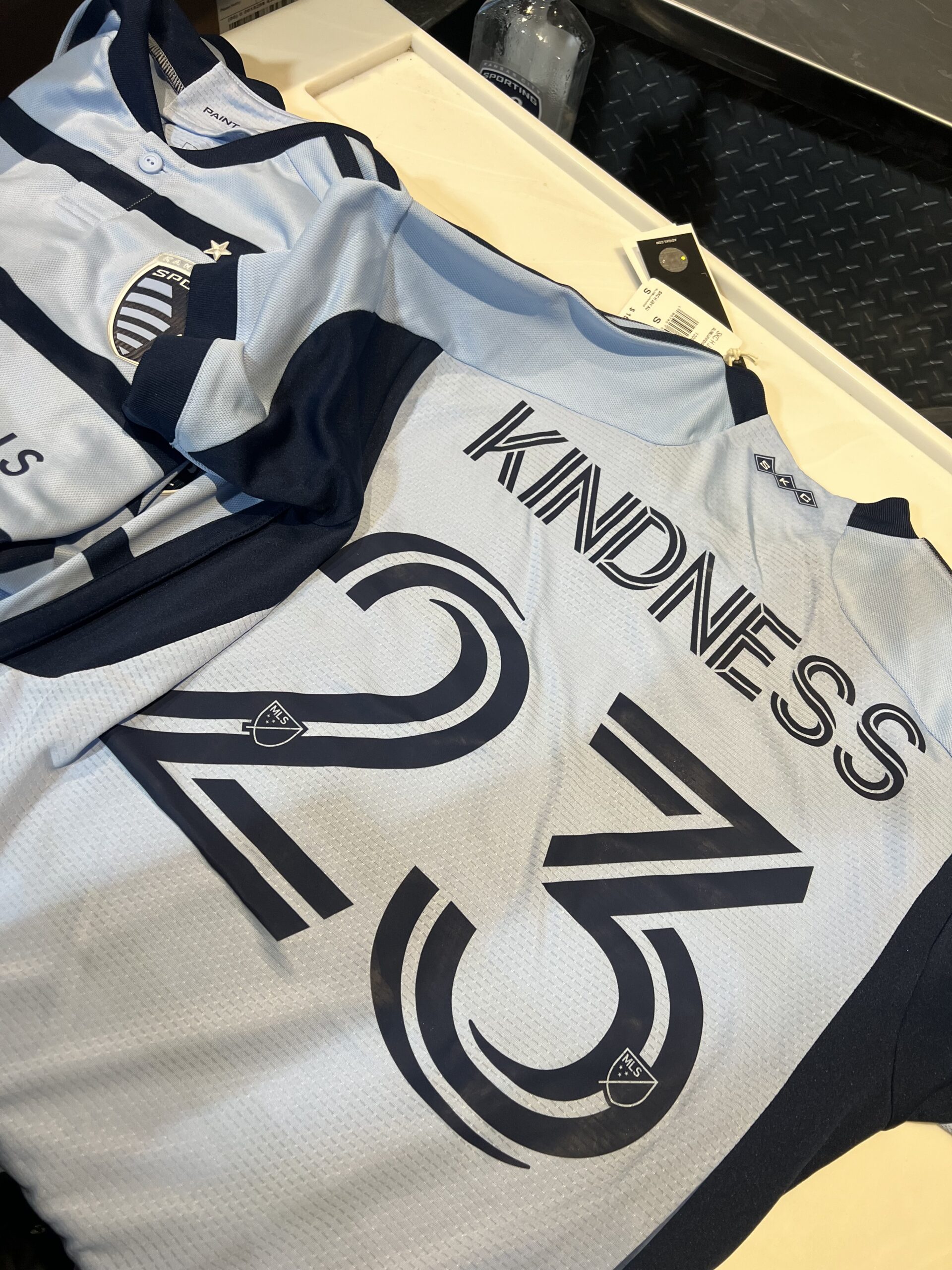OVERLAND TRAIL MIDDLE SCHOOL Case Study
Overland Trail Middle School; Blue Valley School District
Grades: 6-8
Number of students: Approximately 580
Situation
As the school year entered its third quarter at Overland Trail Middle School, the winter doldrums were beginning to take their toll on students and educators alike, said Gabrianne Rickard, LMSW, a school-based social worker.
“February is a rough month here,” she said. “Many just sounded extremely stressed out.”
Based at Overland Trail through a partnership with Children’s Mercy Kansas City, Rickard works as a team with two school counselors to serve 580 students across grades sixth through eighth. At the beginning of the 2022-2023 school year, Overland Trail rolled out RED CARD, a joint campaign created by Children’s Mercy and Sporting Kansas City to encourage kids, teens and adults to speak up against bullying.
Rickard was looking for ways to encourage kindness and positivity among students. Extending the RED CARD campaign through the winter and spring, she said, was a great way to ignite excitement and reduce negative attitudes and drama after a long gloomy winter. She also hoped to celebrate the school’s diversity and bring students together—something she felt was particularly important with this age group.
SOLUTION
To celebrate the launch of the new Sporting KC jersey (also called a “kit”), RED CARD announced the launch of its “KITS” campaign – an acronym for Kindness In The Schools – and timed it with National Random Acts of Kindness Day on Feb. 17, 2023. Each RED CARD school received three of these special kits (numbered 23 for the year and bearing the name “Kindness” on the back) this February.
Rickard saw this campaign as her opportunity to reinforce the RED CARD message, leverage this new campaign, and use the spirit of friendly competition to encourage kindness across the student base.
“I guess the way I see it,” she said, “the way we counteract bullying is through kindness.”
She worked with teachers to identify a “kindness champion” in each grade, who would not only wear the new kit throughout the designated week in February but also pass out eight special kindness cards to other students who exhibited a random act of kindness—with the goal of spreading the cards throughout the school and encouraging others to do the same. In addition, each grade scored a point for each act of kindness observed by a teacher or reported by a student. The winning class would receive an ice cream party at the conclusion of the week.
Rickard made a list of 20 examples of kind acts and distributed them to each class. The list not only included examples of what to do but also what to possibly not do.
“I think a lot of the time kids are just getting in these back-and-forth things,” she said. “Even just choosing to be the one who steps out of the conversation is just as kind as intentionally saying something kind.”
She said it was important to flip the script somewhat, by not just pointing out negative behavior but by also modeling positive conduct.
“We always talk about what kinds of things we want people to stop doing, but sometimes we need to think more about the replacement behavior. … I really do think the way you get more kindness is by modeling it and talking about what it looks like.”
Results
During the competition, students found ways to demonstrate kindness to not only their fellow classmates but also their teachers—holding doors for others, giving compliments (“the one I really tried to push,” Rickard said), picking up trash, making someone laugh with a joke, and offering assistance to teachers. One student wrote positive messages on more than a hundred sticky notes and placed them on lockers.
After the kind act, the person would then pass along the kindness card to that recipient, who would then be encouraged to perform another kind act and keep passing the cards along—all while scoring points for their grade.
Rickard said in addition to witnessing many of these acts in real time (and also enjoying a cleaner-than-usual school), she also heard from many students, who thanked her for the program, which they said “spoke to them” and helped make the school more kind.
“I think those notes the students wrote me were a good indication that it was impactful,” she said. “Even if we can boost the mood and environment just a little bit, I think it’s a win—because we’re a middle school and, man, it can get really rough around here sometimes.”
Next year, she wants to expand the campaign to increase engagement, such as launching a competition among teachers and staff to ensure educators’ voices and concerns are heard. She has already marked some possible dates on her calendar for the next competition and is brainstorming ways to expand.
“Anytime we can have fun and make our learning environment more positive, I think it makes a bigger impact than we see,” she said. “I think it’s worth it.”
“I guess the way I see it, the way we counteract bullying is through kindness.”

